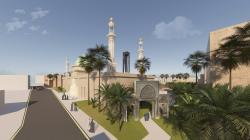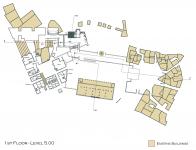It is not only a place to pray, it is the core of light that keeps darkness at bay, and the correct selection of language to make ordinary extraordinary.
Mosul is Northern Iraq’s most important city, and the second largest population in Iraq after Baghdad with 2.5 million residents. It is well known in
1. Its variety in religions and ethnics with 80% muslims, 20% Christians, Turkmens, Kurds, Yazidis, Shabakis.
2. The tens of historical mosques and shrines which made the city a religious landmark
3. Mosul museum and its ancient artifacts
4. Mosul University
It is a city so historical that was seized by ISIL on June 10th 2014 causing the city to be at total isolation. The alleged caliphate declared its commence from The Great Mosque of Al-Nuri. Bombing the mosque and its famous minaret on the 21st of June 2017 was a great shock to the entire world for the historical, religious and symbolic value it holds not only the city, but the whole region.
The biggest response to such a terrorist act is not military, but humanistic response to this dark mindset that destroyed the city, and from this point I want my project to be the core of light in this darkness and the first steps of hope to reconstruct the whole city.
2018
0000
Location: Iraq, North Iraq, Core of Ninaveh City, Mosul, Old Mosul City, 1 Km to the west of Tigris River, Grand Nuri Mosque and its surroundings.
Plot Area: 20,000 sqm
Expected Built-up Area: 10,000 sqm
Project Intentions:
1. Restoration and reconstruction of the old mosque, minaret and the court
2. Adding 2 new plots from the east and west to host a museum, shops, library and renovated houses.
Al-Hadba'a Minaret’s new monument is designed to form the original tilted shape from light/void and steel bars. It is seen as the original form across the city, and especially from the 2 main entrances. As visitors first walk into the project through "The Boulevard" and visit "The Museum of War", they get more familiar with all the facts/war/renovations throughout the years and the destruction of the minaret, therefore when the visitors’ journey resumes through "The Boulevard" and into "Al-Hadba'a Memorial Plaza", the void image of the minaret starts to fade until it can no longer be seen (representing its destruction). The Plaza is where all hopes and dreams of reconstruction rise again, so continuing as a visitor to the rest of the project, (towards the Renovated Nuri Mosque and houses), the void image is reshaped little by little until the minaret’s shape is reformed from the light (representing its reconstruction).
-Deema Al-Yahya, Graduation Student, University of Petra
-Arch. Raid Essoh, Supervisor, University of Petra
Favorited 3 times




















